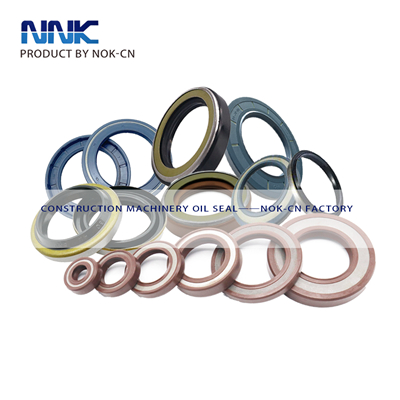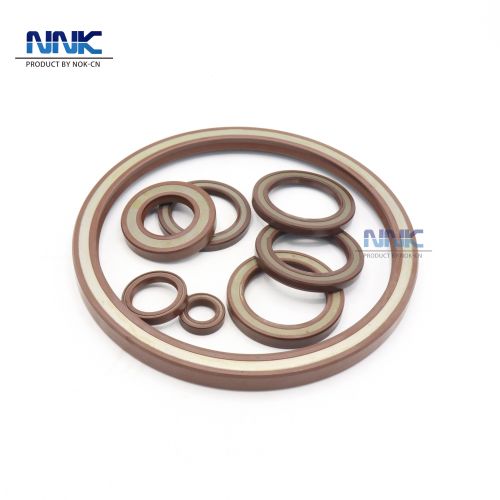What is the difference between mechanical seal and oil seal?

What is the oil seal?
Oil Seals are vital components of a wide range of mechanical systems. They are used to seal the gap between two components, providing a barrier against liquids, dust and air. Oil seals are composed of four basic parts: a case, a spring, a lip and an element.
The most common type of oil seal is the radial seal, which is designed to fit within a rotating or reciprocating shaft or housing assembly. Radial oil seals are designed to prevent the leakage of lubricants and other fluids, while also preventing the entry of dust and other foreign matter. The seal creates a tight seal between two components, while also providing a cushion or damping action, to reduce any harsh impacts when the parts move against each other. Radial oil seals can fit between the shaft and the bearing, the engine case and the valve spring, the camshaft and the bearing, the connecting rod and the camshaft and between the cylinder head and the block, ensuring no fluid is lost between components.
The element is the most important part of the seal. It remains in contact with the shaft or housing, and is the sealing element between them. Common elements are polyacrylate, polytetrafluoroethylene (PTFE) and fluorocarbon (FKM). Each material will provide greater or lesser resistance to hydraulic pressure, depending on the chosen material and seal design.

What is the Mechanical seal?
Mechanical seal is an indispensable component of any machine or equipment used in process industries. It is a type of device that is utilized to establish a seal between two objects. This seal prevents liquid or gas from leaking from the area of separation. Mechanical seals work in a variety of ways depending upon the particular application, but their purpose is to create a dependable seal that will hold over the life of the machine or equipment.
Mechanical seals are made out of a variety of materials with different properties for resisting wear and general environmental conditions. They’re designed to prevent seepage of just about anything: water, oil, chemical compounds, grease, and more. Mechanical seals usually follow the principles of helical compression, but some designs use bellows, diaphragms, or O-rings. There are several types of mechanical seals which are used according to the application requirements, such as single or double seal, axially split seals, multiple point seals, and many more.
Non-metallic seals such as rubber and glass often offer the most durability and corner to corner sealing. Mechanical seals come in different sizes and shapes to meet a variety of sealing requirements and are often used instead of conventional, lubricated packing. They offer better performance when performing tasks such as pumping, stirring, and mixing, because they protect the functioning of the application by preventing leakage.
Mechanical seals are typically made out of five parts: a spring, two sealing faces, a rotary motion, and a stationary motion. The spring keeps the two faces in contact, providing an effective seal, while the rotary motion helps the seal to remain effective by eliminating the effects of thermal expansion. The stationary motion ensures that the faces are reversed in relation to each other and that excess pressure is relieved from the sealing area.
The basic function of a mechanical seal is to contain a fluid, typically liquid, between two separate faces without permitting them to come into direct contact. A significant primary benefit of mechanical seals is their ability to reduce the amount of leakage that is normally associated with pump, motor, or turbine operation. Reduction in leakage leads to decreased wastage, extended maintenance intervals, improved energy efficiency, and ultimately, a decrease in operating costs.

What is the difference between mechanical seal and oil seal?
Oil Seal and Mechanical Seal: The Difference in Function and Application
A seal is an essential component used in a wide range of machines, equipment, and devices providing a secure closure to prevent the ingress of dust, dirt and other contaminants. Despite their similar features, there are two distinct types of seals used in various applications - the oil seal or shaft seal and the mechanical seal.
An oil seal, also referred to as a shaft seal, is a device used to contain lubrication in rotating devices such as shafts, cylinders, and motor crankshafts, and also help prevent leakage of oil and other fluids. An oil seal is a self-contained low pressure, non-contact type seal, composed of an elastomeric lip (or lips) that prevent the escape of lubricants, containment of pressure, pneumatic equipment and chemicals, and the intervention of dirt, dust and other dirt particles from the system. These seals are typically used in wide range of applications requiring low pressure and provide excellent dust protection characteristics.
In comparison, a mechanical seal is a high-pressure seal typically used in applications that employ a rotating shaft metal bellows and contain areas of contact. These seals are durable and can withstand different high-pressure conditions and a wide range of temperatures, often found in pumps and compressors. A mechanical seal verges on becoming the contact-less type of seal, furthering its resistance to extreme temperatures and pressures. Its contact-less design also means that it is much more tolerant to vibration than an oil seal, allowing for a much tighter, consistent seal. The contactless design is particularly useful in pumps and compressors, where dust and dirt is not able to wear down the seal, ensuring reliability and longevity.


